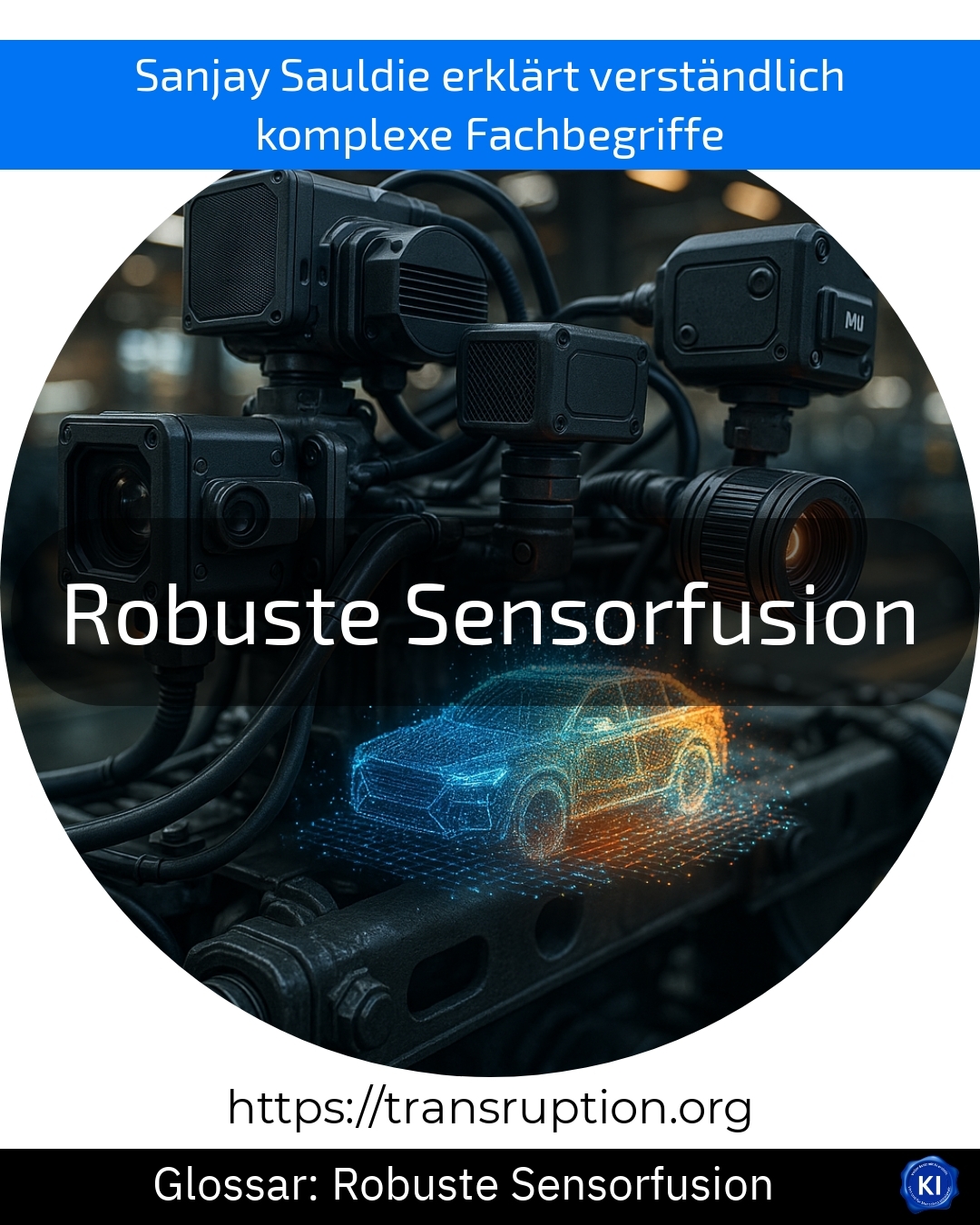Robust sensor fusion is a term used in the fields of artificial intelligence, automation and the Internet of Things. It describes a technology in which data from different sensors is combined with one another in order to obtain the most accurate and reliable overall picture of a situation.
Sensors alone often have weaknesses: A camera can see little in fog, a radar does not recognise colours and a temperature sensor does not measure movement. Sensor fusion ensures that these weaknesses are compensated for. Robust means that the system delivers stable results even if individual sensors fail or provide inaccurate data.
A simple example: a self-driving car uses robust sensor fusion. It simultaneously processes information from cameras, radar and lidar sensors. If the camera images are blurred in the fog, the car can still continue to drive safely because the radar and lidar are still providing good data. This interaction ensures greater safety and reliability, as the system does not rely on a single sensor.
Robust sensor fusion makes devices "smarter" and more resistant to errors - an important step for modern, automated applications in industry, mobility and smart homes.















